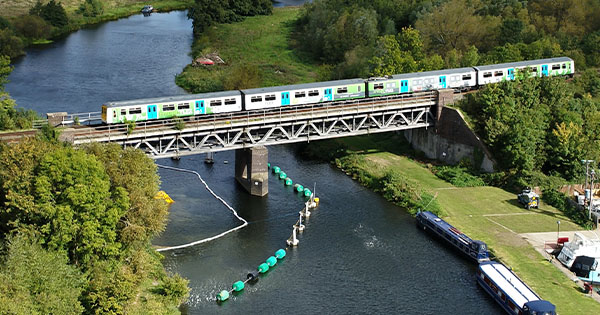Traction power retro-fits to achieve zero-carbon

Relevant RTS critical priority(ies):
Low emissions
A zero-carbon railway needs zero-emissions traction and there is much excitement about the potential for new hydrogen and battery trains to replace existing diesel stock. But the urgency required to address both the climate and air quality emergencies means retro-fitting existing rolling stock to reduce emissions must also play a significant role. The rail industry has already made significant progress:
- Porterbrook have developed the FLEX programme for retrofitting Class 319 units with modular powerpacks so they can be adapted for future energy modes. This includes working with Wabtec Brush to create a bi-mode unit that will operate seamlessly over electrified and non-electrified routes, and with the University of Birmingham’s Centre for Railway Research and Education to develop the HydroFLEX hydrogen trains. This has successfully undertaken its first mainline test, achieving a top speed of 50 mph.
- Angel Trains and Magtec has developed a retro-fit hybrid diesel-battery drive which can reduce engine emissions by at least 25% and eliminated them from sensitive areas. It is being trialled by Chiltern Railways.
- Alstom and Eversholt Rail have converted a Class 321 to create a hydrogen-powered train that fits the UK gauge, and could run across the UK as early as 2022, emitting only water.
- Vivarail have designed a modular train based on former London Underground stock. The Class 230 has inter-changeable powerpacks, including diesel, battery and fuel cells and can run in hybrid versions. Diesel hybrid and battery versions have received ORR Authorisation to run on the mainline network.
The next step is to see some of these deployed in passenger service.
Back



